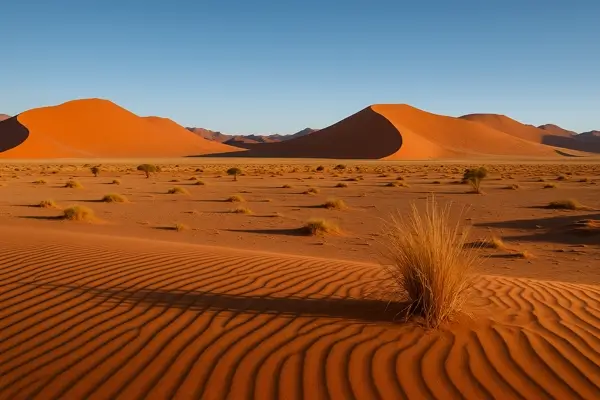
First Country to Include Environmental Protection in Its Constitution – Namibia is a global leader in conservation, being the first country to include environmental protection as a key part of its constitution.
Home to the World’s Oldest Desert – The Namib Desert, after which the country is named, is believed to be the oldest desert on Earth and features towering red sand dunes, especially around Sossusvlei.
Skeleton Coast – A Mysterious Shoreline – Namibia’s Skeleton Coast is known for its foggy shores, shipwrecks, and seals, creating one of the most dramatic coastlines in the world.
Low Population Density – Namibia is one of the least densely populated countries on Earth, offering vast open landscapes, big skies, and quiet, untouched nature.
Etosha National Park – A Wildlife Haven – Etosha is one of Africa’s best national parks, where visitors can see elephants, lions, rhinos, giraffes, and more around its iconic salt pan.
A Multilingual Nation – While English is the official language, Namibia also recognizes multiple indigenous languages, including Oshiwambo, Herero, Nama, and Afrikaans.
German Colonial Influence – Namibia was once a German colony, and cities like Swakopmund and Lüderitz still feature German architecture, bakeries, and street names.
Traditional Himba Culture – The Himba people of northern Namibia are known for their distinctive red ochre body paint, braided hairstyles, and semi-nomadic lifestyle.
Stargazing Paradise – With minimal light pollution and clear skies, Namibia is one of the world’s best places for stargazing, especially in the NamibRand Nature Reserve.
Adventure Activities and Unique Landscapes – From sandboarding in the desert to hot-air ballooning, dune climbing, and wildlife safaris, Namibia offers thrilling experiences across surreal landscapes.
